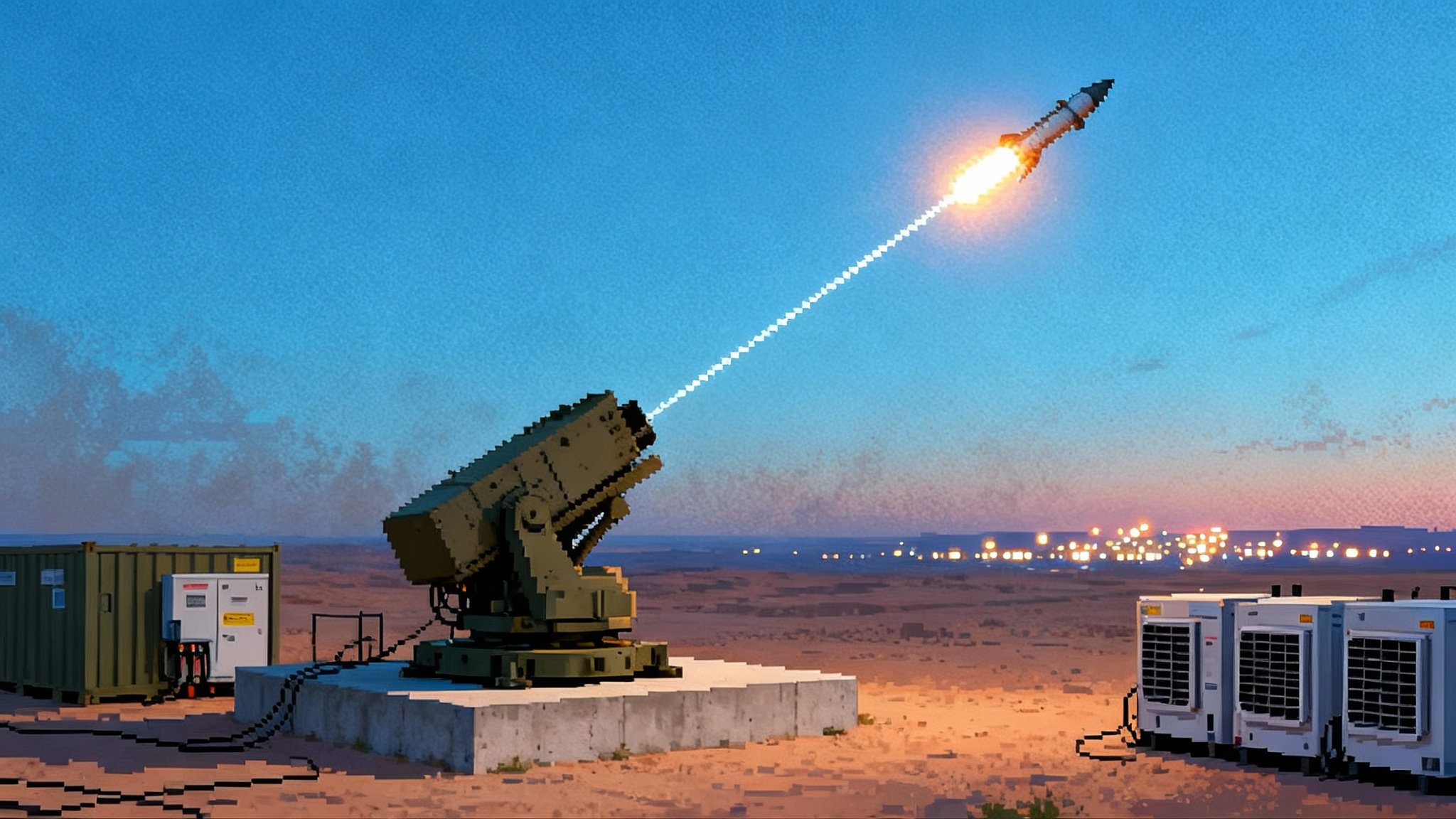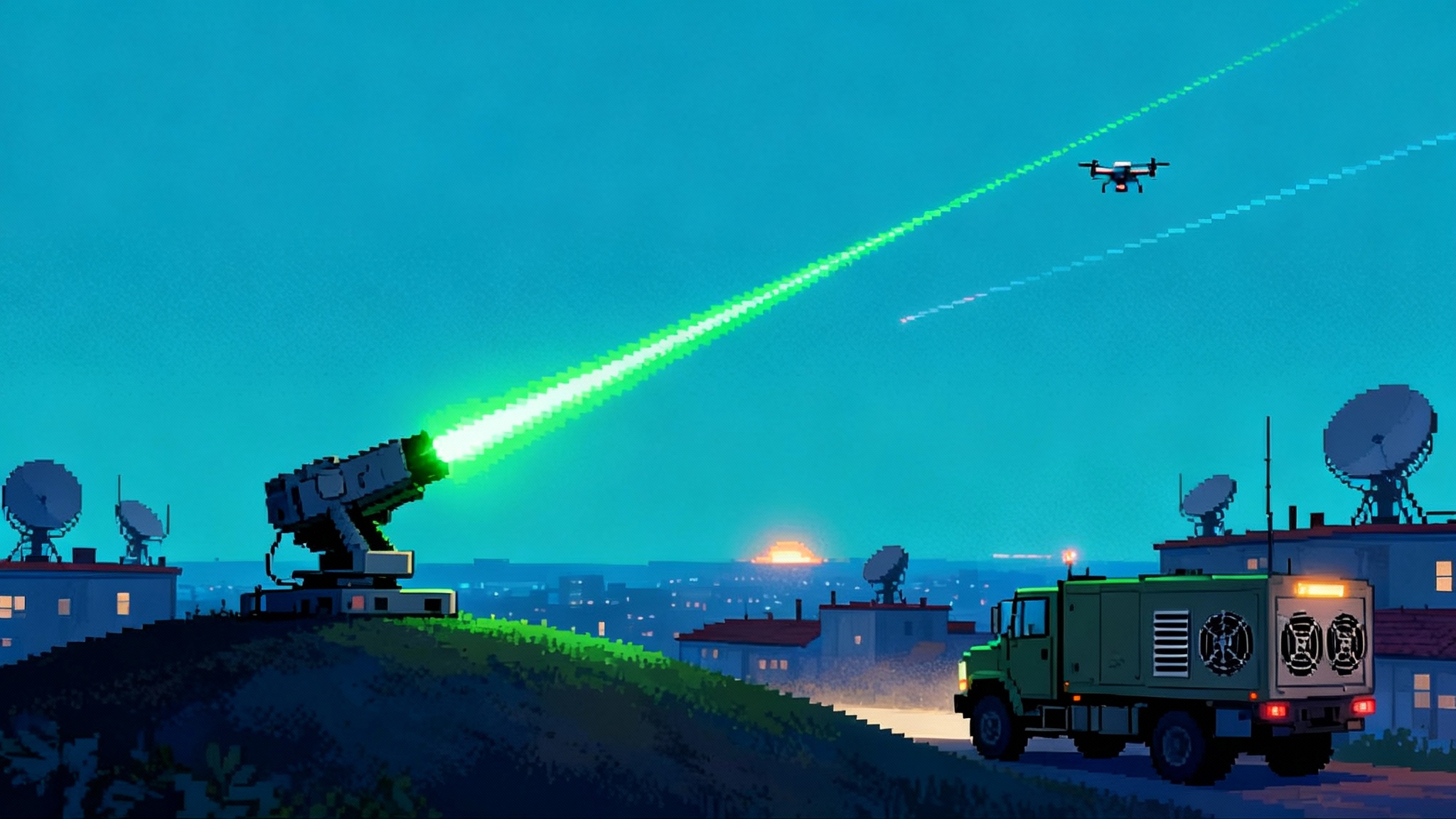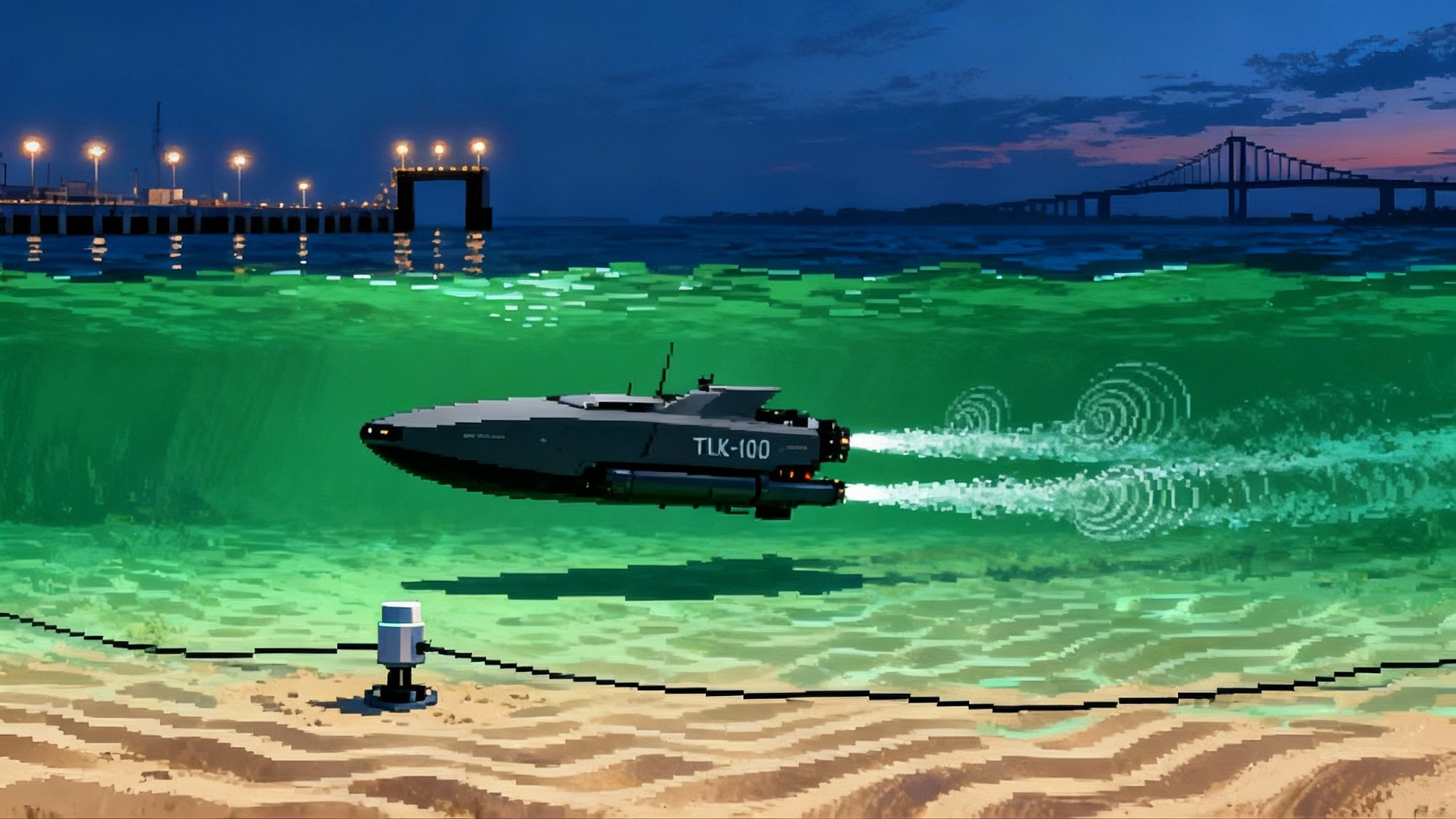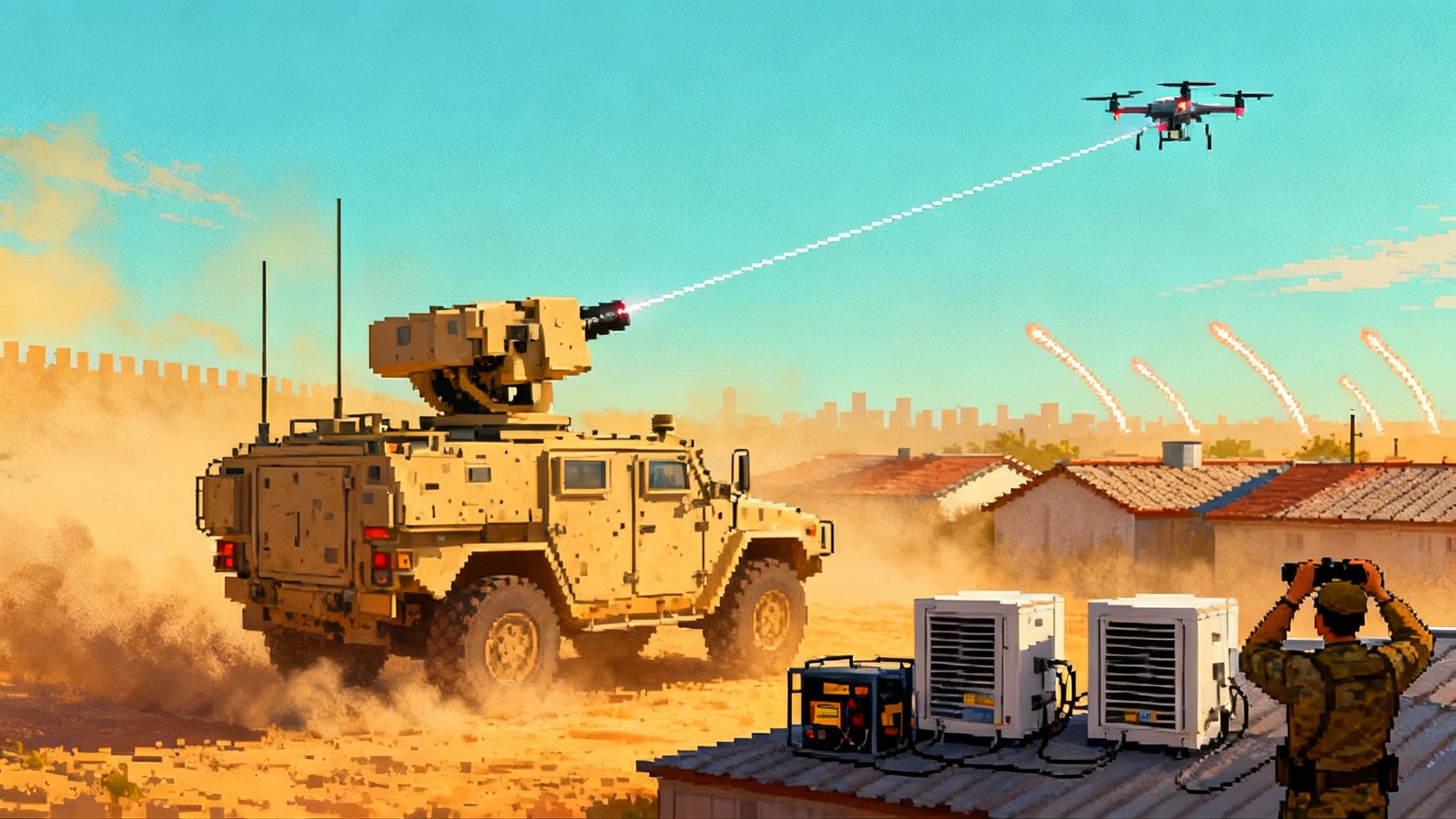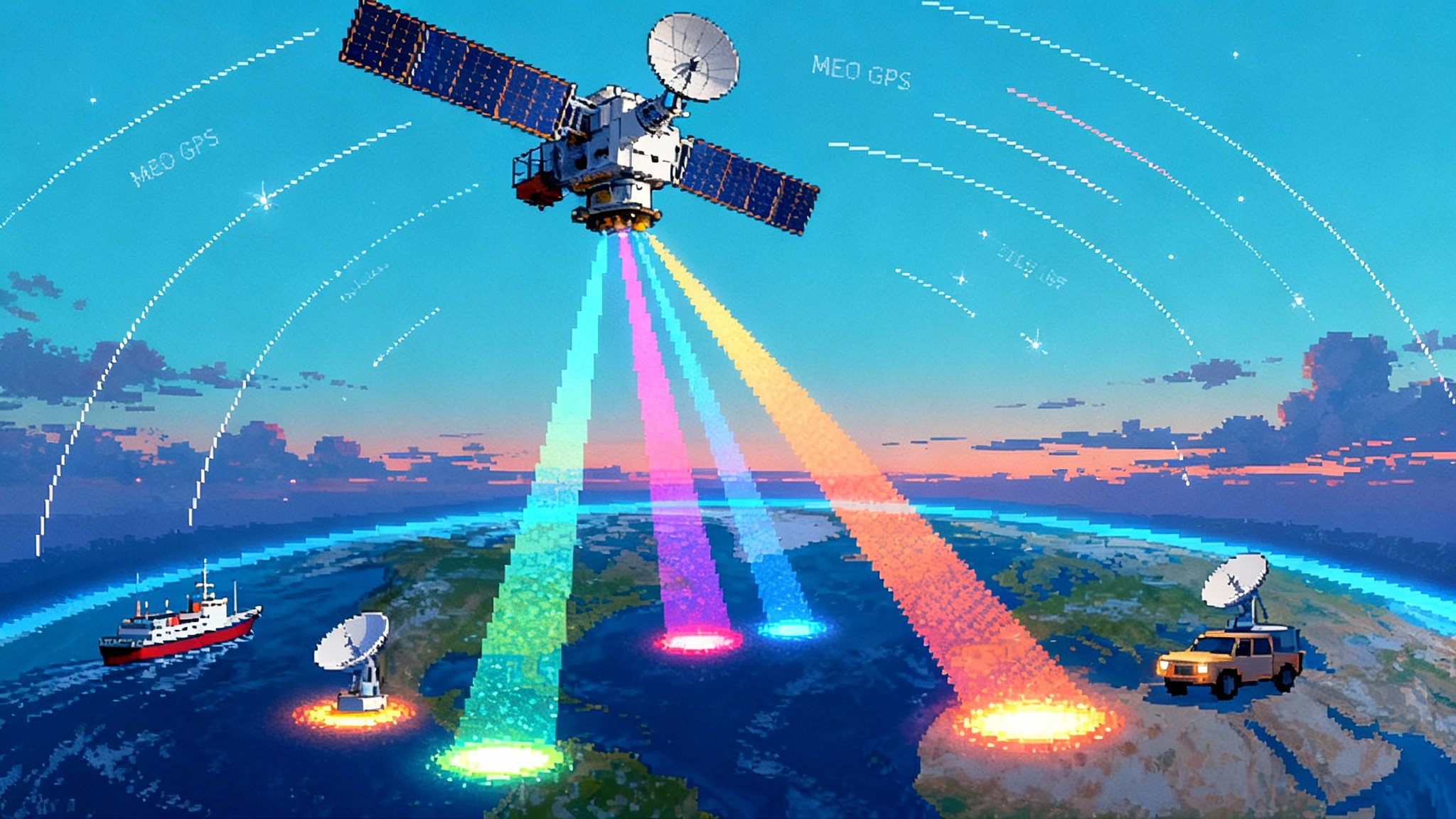SDA Tranche 1 Takes Orbit, Rewiring Missile Warning and Comms
With a September 10, 2025 liftoff, the Space Development Agency began a ten‑mission, month‑by‑month buildout of a low Earth orbit mesh that will track hypersonic threats and move fire control data at combat speed to shooters across the Indo-Pacific.

Tranche 1 is off the pad
On September 10, 2025, a Falcon 9 rose from Vandenberg and placed the first 21 Tranche 1 Transport Layer satellites into low Earth orbit, kicking off a campaign that will fly roughly once per month for the next nine months. The opening salvo belongs to York Space Systems’ T1TL-B spacecraft, and with it the Space Development Agency’s plan to shift missile warning, hypersonic tracking, and tactical communications from a handful of exquisite spacecraft to a proliferated mesh network has become real. The Space Force’s Space Systems Command confirmed the date, payload count, and cadence in a Space Systems Command launch release.
From a few jewels to a living mesh
For decades, strategic missile warning leaned on small numbers of very capable satellites in high orbits. Those platforms brought unmatched sensitivity and global reach but also created single points of failure. SDA’s Proliferated Warfighter Space Architecture flips that model. Instead of a few big targets, Tranche 1 fields 154 operational satellites in low Earth orbit, plus four demonstration spacecraft, linked by optical crosslinks into an always-on relay for data and tasking.
In this mesh, every Transport Layer node is a router with lasers. Optical crosslinks move sensor data across the constellation at fiberlike speeds, bypassing ground bottlenecks. Instead of schlepping raw imagery or tracks down to a single gateway for fusion and redistribution, the network can forward, filter, and fuse in space, then deliver tailored data to the right user through regional ground entry points or directly into tactical data links. The effect is lower latency and fewer seams where an adversary might jam or blind the system.
What Tranche 1 actually puts on orbit
- Transport Layer: 126 satellites from multiple primes create the backbone of encrypted, low latency connectivity. These satellites host optical crosslinks, Ka band downlinks, and Link 16 radios to talk to legacy joint forces at the edge.
- Tracking Layer: 28 satellites carry infrared sensors for persistent missile warning and tracking, including hard targets like dim, low altitude hypersonic glide vehicles. Tranche 1 Tracking begins launching after the early transport flights and scales to regional then broader coverage as planes fill out.
- T1DES: A dozen demonstration and experimentation spacecraft de risk features, payloads, and configurations that roll into later tranches. SDA’s first T1DES prototype launched in June 2025 as a pathfinder for both space and ground integration.
Operations are centralized in two Space Operations Centers, one at Grand Forks AFB in North Dakota and another at Redstone Arsenal in Alabama, with a global network of ground entry points. That ground fabric is as important as the satellites, since it ingests terrestrial sensor data, pushes tasking to the constellation, and stitches the space layer into the fire control systems that close kill chains.
A ten mission campaign on a monthly drumbeat
SDA is executing Tranche 1 as a ten mission sequence. Six flights will build out the Transport Layer, and four will field the Tracking Layer. The first few rides are transport only to seed the mesh with enough crosslinked nodes to carry traffic and to start regional services. With each month, coverage, resiliency, and capacity step up. By the middle of the campaign, operators should see measurable improvement in message latency and track custody, first in specific theaters and then more broadly.
Early warfighter immersion in the Indo-Pacific
SDA calls Tranche 0 its warfighter immersion tranche, and the concept carries into Tranche 1 operations. Rather than wait for perfect, the agency will field useful. The first regions to receive operational services are prioritized for the Indo-Pacific. That means Link 16 connectivity from space to ships and aircraft, beyond line of sight targeting updates to dispersed shooters, and space delivered missile track data that can be routed into joint command and control systems in the theater. For context on how this links to regional posture, see our look at Typhon in Japan deterrence reset.
Why optical crosslinks and Link 16 in space matter
Optical crosslinks are the secret sauce. They turn dozens, then hundreds, of small satellites into one distributed switch. With resilient laser paths running in plane and cross plane, the mesh keeps passing data even when individual nodes or ground sites are unavailable. That is vital in a fight where an adversary will target ground stations first.
Link 16 in space brings the joint force along without forcing new radios on day one. Tranche 0 proved that space to ground Link 16 works with real ships and aircraft outside the continental United States. Tranche 1 scales that capability and adds a much larger set of nodes that can receive, translate, and rebroadcast messages. Because Link 16 is line of sight on Earth, adding a space segment turns disconnected clusters of shooters into a theater wide network. A surface action group, an Aegis destroyer, a Patriot or THAAD unit on land, and an F 35 patrol can all see the same track picture faster and with fewer gaps.
The combination compresses kill chains. A low latency missile track detected by a space sensor crosses the mesh on lasers, exits near the intended shooter, and flows over Link 16 or an IP gateway into battle management systems. That turns what was a seconds to minutes handoff into a near real time cue or engagement order.
How this fits with SBIRS and HBTSS
- SBIRS: The Space Based Infrared System in GEO and HEO has been the backbone of strategic missile warning with scanning and staring sensors that can detect launches worldwide. It is superb for early warning and strategic cueing but was never designed to be a low latency fire control bus for tactical weapons. Its few satellites and fixed orbits make it both indispensable and inherently targetable in a high end fight.
- HBTSS: The Missile Defense Agency’s Hypersonic and Ballistic Tracking Space Sensor prototypes, launched in 2024, bring medium field of view infrared that can see and follow hard to detect hypersonic weapons. HBTSS is an accuracy and dim target step that complements SDA’s wider field sensors. In SDA’s construct, those medium field sensors hand fire control quality tracks to the Transport Layer and onward to shooters. Over time, SDA is integrating both wide and medium field sensors into its tracking layers, converging warning, tracking, and fire control delivery in one mesh.
In simple terms, SBIRS tells you a threat is up and roughly where, HBTSS and Tranche 1 Tracking keep custody of the hard targets, and the Transport Layer moves that data to the weapon that needs it now.
Plugging into IBCS, Aegis, and Guam’s distributed defense
The payoff is not just moving bits in space. It is closing engagements on land and at sea. SDA’s ground entry points and battle management applications feed data into existing service command and control systems. For the Army, that means the Integrated Battle Command System, which fuses diverse sensors and shooters. For the Navy, that means the Aegis Combat System afloat and ashore. On Guam, the Pentagon is building a layered architecture that must knit THAAD, Patriot and LTAMDS, Aegis Ashore elements, and other effectors under a joint track standard.
A recent Government Accountability Office review outlines the push to accelerate common track management and to make joint tactical integrated fire control real on Guam, including upgrades that let Aegis engage using remote tracks from Army sensors and vice versa. That same joint fabric benefits from low latency space tracks and connectivity, because the space layer can fill blind spots, maintain custody of maneuvering threats, and deliver tracks to whichever battle manager can shoot first. See the GAO review on Guam architecture for current integration plans and milestones. For deeper background on the island’s defense design, read our analysis of Guam’s missile shield rewired.
What the ten mission Tranche 1 campaign delivers
- Launch 1: 21 Transport satellites on September 10, 2025, initial regional communications and crosslinks.
- Launches 2 to 6: Additional Transport batches to grow capacity, resilience, and expand Link 16 and Ka band coverage.
- Launches 7 to 10: Tracking Layer missions begin to fill planes with wide and medium field infrared, increasing custody of ballistic and hypersonic threats, and enabling the first fire control quality handoffs through the mesh.
By the end of the series, SDA expects regional capacity that is tactically useful, especially in the Indo-Pacific, with more robust global services following as subsequent planes and later tranches arrive.
The risks to watch
- Supply chain and vendor throughput: Tranche 1 already slipped from earlier targets due to parts delays. The most stressed components are encryption devices and optical communications terminals. Those are long lead, high assurance items, and line shutdowns or test backlogs can ripple into launch schedules.
- Link 16 approvals: SDA has successfully demonstrated Link 16 from space with allied partners and over international waters, but full scale testing over U.S. airspace awaits final approvals. Until that is complete, some integration work inside the continental United States will lag.
- Ground segment maturity: Two operations centers and a web of ground entry points must manage hundreds of simultaneous crosslinks, keys, users, and mission apps. Software maturity, cyber hardening, and enterprise key management are as critical as space vehicle health.
- Integration debt: The real goal is engagement on demand. That requires clean handoffs into IBCS, Aegis, C2BMC, and service specific fire control systems, plus alignment with evolving joint track and fire control standards. Any mismatch in message sets, time tagging, or track quality can slow the very kill chain SDA is trying to compress.
- Budget and cadence: A monthly campaign is efficient, but weather, range schedules, and launch provider calendars can introduce pauses. Those pauses matter when theater commanders are planning exercises around new capabilities.
What Tranche 2 and Tranche 3 add
Tranche 2 starts launching in 2026, scaling Transport to global persistence and adding advanced tactical satcom features proven in T1 demonstrations. T2 satellites carry more optical terminals, higher throughput, and expanded data link options to push more bits to more users. The result is higher capacity pipes for both sensor data and battle management applications.
Tranche 3 pushes further on the sensing side. SDA planning documents describe a Tranche 3 Tracking Layer with at least 54 satellites across six planes, targeting global, persistent detection and tracking of conventional and advanced threats with improved sensitivity, calibration, and accuracy. Tranche 3 Transport variants seek more resilient networking, growth room for on orbit processing, and options for alternative PNT in GPS contested environments as funding allows. For a look at resilient PNT trends, see NTS-3 reprogrammable PNT.
What an initial operational constellation by 2027 really means
If SDA holds to its schedule, the department gets initial warfighting capability by 2027. That means a real mesh, not a PowerPoint one, where tracks from space flow directly to shooters with minimal human in the loop friction, and where Link 16 users at the edge can receive and contribute to a joint picture beyond the horizon.
For deterrence, the signal is clear. A proliferated LEO architecture is harder to blind or break. An adversary can target a few satellites, but the mesh routes around losses. Hundreds of nodes, frequent launches, and commercial style production lines make replacement and surge feasible. The consequence is a force that retains custody of threats and the ability to fire even under intense space attack pressure.
For survivability, disaggregation wins. No single satellite becomes a golden bullet. Optical crosslinks reduce dependence on ground nodes that are easy to find and harder to defend. Layered sensing mixes fields of view and phenomenologies, increasing chances to spot dim or maneuvering weapons. Combined with the evolution of joint track standards and Guam style distributed defense, the space layer becomes a durable part of the joint kill web rather than a brittle stovepipe.
There is still work to do. Radios must be certified, ground software hardened, optical terminals produced at scale, and integration with IBCS, Aegis, and C2BMC tightened. But with Tranche 1 taking orbit and a steady drumbeat of launches ahead, the Pentagon’s missile warning and tactical communications backbone is moving from exquisite few to resilient many. That shift is the point. It gives commanders a network designed to fight through attacks, keep sensors and shooters connected, and put credible, timely options on the table when it matters most.
